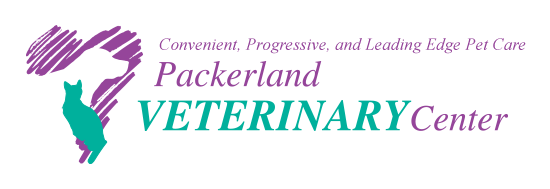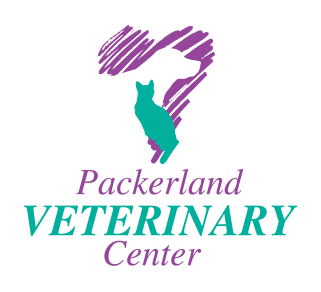


SERVICES
Orthopedic Services
Click on the service below to learn more.
Achilles Tendon Injuries
The Achilles is attached onto the heel bone of the hind limb and is responsible for keeping the heel of the paw elevated off the ground. Trauma is the most common reason for the tendon to tear, which occurs most often in active, large-breed, mature dogs. While generalized hind limb lameness is the most common symptom of the condition, there may be other tell-tale signs dependent upon which components of the tendon are torn. Some dogs may exhibit a "crab-clawed" appearance if one portion of the tendon is torn and if the entire tendon is torn the dog will walk with the paw dropped onto the ground.
Treatment of Achilles tendon injuries is dependent upon several factors. The most important factor is length of time since the injury has occurred. Achilles injures can be frustrating because they are less common and can be difficult to identify. The longer the injury has been present, the more damage is done to the tendon which subsequently makes repair more difficult and ultimately less successful. If it is diagnosed and addressed quickly, surgery can be used to reattach the tendons. If there is significant change present already, other options such as Stem Cell Therapy may be more appropriate. Each patient is examined closely to determine the ideal procedure for the best possible prognosis.
Angular Deformity
Some patients that present to us that have either a congenital defect or an injury to the growth plate of one of their bones. These pets have subsequently developed an angulation of the bones, often to the lower portion of the leg. Because the deformity changes the orientation of the limb in some way, it also changes the angle of forces directed through the joint and limb structures. This can lead to abnormal wear of the cartilage surfaces, predisposes the pet to dislocation or even causes the limb to become non-functional.
Depending on the severity of the angulation, surgical correction may be indicated. Surgery can, in many cases, improve limb function however the limb will never be completely normal. Correction can involve a variety of procedures including BODPUO (Bi-Oblique Dynamic Proximal Ulnar Osteotomy) and the type that is ultimately performed is dependent upon the needs of each individual patient.
Arthrodesis
Arthrodesis is the surgical elimination of joint motion and, ultimately, bony fusion of joint surfaces. Arthrodesis is considered a salvage procedure for patients when other treatments will not restore normal, pain-free joint function. It is often used to treat pets with carpal hyperextension injuries which have caused severe palmar ligament damage. This ligament does not tend to heal well even with splinting and often needs to be fused in a functional position for the pet to regain some useful function of the limb. While the procedure it not without complications, it does provide a good overall prognosis in pets with extensive damage.
Arthroscopy
Arthroscopy is a minimally invasive procedure that allows our veterinarians to view the internal environment and structures of joints and in some cases perform corrective procedures. This technology utilizes a small scope attached to a camera and viewing screen that is inserted within the joint to allow the surgeon the view the joint environment.
Arthroscopy is beneficial because it allows direct visualization of the cartilage surfaces and soft tissue under magnification. Due to the relatively small size of the instruments, there is often less tissue injury. Minimal tissue disruption causes less post-operative discomfort for the patient, and typically less scar tissue development. Patients undergoing arthroscopic procedures typically have a shorter recovery time and quicker return to function.
Biceps Tendon
Bicipital Tenosynovitis, or inflammation of a tendon and its sheath, is a very painful condition most often seen in older medium and large size dogs. The exact cause of the condition is unknown, but several possibilities include: tendon injury, involvement secondary to arthritis or other orthopedic conditions such as OCD, and infection. Classic presentation includes intermittent forelimb lameness which worsens after activity. Examination of these patients typically reveals discomfort with deep palpation over the area of the biceps tendon.
There are a variety of ways to approach a case of Bicipital Tenosynovitis. Some patients respond fairly well to anti-inflammatory medications, intra-articular steroid injections or even PRP treatments. If these become less effective or the patient's symptoms are more severe in nature, surgery may be needed to relieve patient discomfort. Surgery can often be done arthroscopically which minimizes tissue injury and results in a faster return to function. There are a variety of techniques that can be utilized in surgery, and the approach is customized for each patient which optimizes their prognosis and recovery.
CORA Based Leveling Osteotomy (CBLO)
Cruciate Ligament (ACL) Injuries
Injuries to the anterior cruciate ligament (ACL) in the knee can lead to severe debilitating lameness and pain. Early diagnosis and treatment will produce the best results and limit the severity of arthritis. Many ACL injuries start out as partial tears with mild intermittent lameness. Even partial ligament injuries can lead to severe irreversible changes in the joint and should therefore be treated proactively.
We offer multiple surgical options for patients with ACL injuries. With each procedure the first part of the operation is to explore the joint, remove the remnants of the torn ligament, and to assess the meniscus which acts as a shock absorber between the two major bones that make up the knee joint. The second part of the surgery is to stabilize the joint and eliminate the abnormal front to back movement and instability in the joint that occurs when the ACL tears. This can be accomplished with a variety of techniques:
Extra-Articular Stabilization - Involves placing synthetic suture material on the outside of the joint to mimic the direction and orientation of the original ligament that was in the joint. This procedure produces better results in smaller and less active dogs.
TPLO (Tibial Plateau Leveling Osteotomy) – A revolution for it's time, Dr. Dunbar was one of the first veterinarians certified in this specialized procedure back in 2002. The TPLO addresses the slope in the rear portion of the knee joint. A cut is made in the bone in the upper portion of the tibia (lower major bone of the knee joint) and is repositioned to eliminate the front to back instability. The repositioned bone is held in place using a bone plate and screws. This procedure works by eliminating the need for an ACL and provides much better results than an Extra-Articular in larger and more active dogs.
CBLO (CORA Based Leveling Osteotomy) – The "latest and greatest" in ACL treatment, this procedure is similar to TPLO in that it also addresses the slope of the tibia via a bi-radial cut in the bone, but with changes that allow the tibia to retain a more natural alignment of forces through the limb, thus producing better overall results long-term. This procedure utilizes state-of-the-art implants for additional support and often results in faster healing vs. the TPLO.
The choice between the surgical options depends upon the size of the dog, athletic function of the animal, results desired, cost of the procedure, and rehabilitation requirements. We know that each pet we see is unique, which is why we cater our treatment recommendations to each individual we see. We feel it is our responsibility not only to provide top of the line care to your pet, but also to educate you so you can make the best overall decision for your family and pet's needs.
Extra-Articular Stabilization
Femoral Head Ostectomy (FHO)
FHO can be performed on pets of any age and with any severity of hip dysplasia. The procedure involves removing the femoral head (ball), thus creating a ‘false' joint made up of soft scar-like tissue separating the pelvis and femur bone with no remaining bony attachment. This procedure is a salvage procedure as it preserves limb function at the compromise of some physical abilities. The FHO provides better results in small and medium sized pets versus the larger or giant breeds and/or athletic pets. It is, however, an economical way to preserve use of the limb and decrease the pain associated with hip dysplasia.
Fracture Repair
At Packerland Veterinary Center, we are able to handle the simplest of broken bones, all the way through the most complex of fracture presentations. Dr. Dunbar's extensive training and orthopedic experience have given him the tools to provide the best care possible for fractures of all shapes and sizes.
There is no cookie cutter method to approach every patient with a broken bone. We have to be flexible in the methods that we have available to approach each individual situation. Some fractures may heal adequately with external support such as casting, while others require elaborate bone plate and screw repairs along with bone grafting techniques. The trick is to know what works with each fracture presentation, and to be able to perform the procedure in a manner that will give the patient the best recovery possible.
Fragmented Coronoid Process (FCP)
The Coronoid Process is another prominence of bone on the ulna in the elbow joint. It also has it's own area of bone growth, similar to the Anconeal Process. The Coronoid Process is often difficult to visualize on radiograph, and often requires specialized positioning and radiograph exposure techniques. Similar to UAP, a Fragmented Cornoid Process creates a loose piece of bone within the joint. It does not take much of a problem in the elbow joint to initiate and create significant arthritic changes. FCP is a condition that warrants prompt, aggressive surgical intervention.
Hip Evaluation – PENN HIP AND OFA Certified
It may be important to evaluate the hip conformation of a dog, particularly if it is intended to be involved in a breeding program. With our extensive hip evaluation work, we can give a "highly educated" opinion, but when official documentation is needed we are certified to take both PENN HIP and OFA evaluation radiographs. Typically the positioning for these highly specific radiographs does require sedation, making this a day procedure. OFA radiographs certify dogs after 2 years of age, while PENN HIP's distraction index can evaluate any dog after 16 weeks of age.
Luxating Patella
Luxation of the patella (knee cap) is a relatively common problem in pets. Luxation means that the patella is able to move out of place from the trochlear groove of the knee. The severity of the luxation varies from patient to patient, but in all patients that abnormal movement of the patella causes degenerative changes in the joint over time. Some patients can be managed on anti-inflammatory pain medications, but the joint changes that continue to occur are irreversible.
Due to the progressive nature of the degenerative joint changes (arthritis), we recommend prompt surgical correction in patients with patella luxation. With this condition, there is no one procedure that applies to all patients. Initially, we enter the joint on an exploratory basis with the objective of identifying the specific factors that are causing the luxation. Some patients have trochlear grooves that are too shallow to "trap" the patella from sideways motion, some have a mal-alignment of the patellar tendon causing a "pull" on the patella in a particular direction and many patients have both. A surgical plan is made intra-op once we have determined what that particular pet requires.
As with any surgical procedure, overall prognosis is dependent upon the amount of degenerative changes already present in the joint. While every pet will benefit from having the luxation surgically corrected, those that address it early will have the most ideal end result.
Osteochondritis Dissecans (OCD)
OCD is a cartilage disorder that can affect any joint. It is most common in large breed, fast growing dogs like Labrador and Golden Retrievers. OCD occurs when a separation develops between the cartilage surface within the joint and the abnormal subarticular cartilage and underlying bone. When the separation occurs, a blister-like lesion develops on the cartilage surface. Often, a crack will form around the edge of the lesion and allow joint fluid to leak into the lesion and create a flap. This causes pain to the patient (like having a constant "pebble in your shoe") and sets up inflammation within the joint which leads to arthritis.
The typical age of initial onset of OCD lameness symptoms is 4-10 months. Early diagnosis and intervention is the key to preventing long-term irreversible damage to the joint. Correction of the problem requires surgical removal of the OCD lesion. Once the lesion has been removed, the body will fill the area in with a different type, but similarly functional, form of cartilage. Patients with chronic OCD will see improvement of symptoms with surgery, but the presence of significant arthritis in the joint may still cause occasional lameness.
Platelet Rich Plasma Treatment (PRP)
Popular in human orthopedics, PRP therapy utilizes a patient's own blood plasma as an all-natural, drug free pain relief option. Once activated by our specialized equipment, the PRP works to initiate and accelerate tissue repair and reduce localized inflammation. PRP can be utilized in a variety of conditions, but most often is used to treat the inflammation present in injured joints and tendons. While it does not provide a more long-term regeneration of cells like Stem Cell Therapy, PRP can be an affordable short term solution to treat pain and inflammation in our patients.
PRP treatment begins with a blood draw from the patient. The blood is then specially processed to bring out the PRP mix of concentrated serum and platelets. Patients then receive light sedation while the PRP is injected into the specific area or areas needing treatment. Any additional PRP can be frozen and saved short-term for future treatments that may be needed in the months following. While each pet's response to PRP is different, we have seen great short and even some longer term results utilizing this therapy.
Proximal Abducting Ulna Osteotomy (PAUL)
Studies suggest that dogs bear a majority of their weight on the medial (inner) aspect of the elbow joint. In dogs with Medial Compartment Disease, this unequal load on the deteriorating cartilage of the elbow joint causes debilitating pain. With a long history of ineffective treatment options, the PAUL procedure is a novel and exciting new surgical technique for the treatment of dogs with Medial Compartment Disease. In essence, this procedure allows us to make a subtle change in limb alignment which unloads the medial compartment and makes better use of the healthy lateral (outer) cartilage surface. The PAUL procedure has shown to be a viable option to help treat and prevent the devastating effects of this disease.
CUE (Canine Unicompartmental Elbow) Procedure
Another way of approaching advanced medial compartment disease of the elbow is the CUE procedure. This advanced surgical approach involves replacing the damaged joint surfaces of the inner (medial) portion of the elbow joint with implants in a partial joint replacement procedure. The implants provide new artificial joint surfaces where the cartilage has been worn away, relieving pain and improving function of the limb.
Stem Cell Therapy (SCT)
This procedure involves surgically harvesting fat tissue from your pet and then processing that tissue in house to remove the stem cells. The stem cells are then "activated" with our special equipment and later the same day we can inject the cells back into specific areas of the patient where needed. Stem Cells will not change any structural issues that have led to injury, but can help with any arthritis that has formed in the joint by helping to reduce inflammation and rebuild the joint cartilage surface, making the pet more comfortable overall. In many cases, SCT can often be used in conjunction with surgical treatment to maximize overall results.
For more in-depth information about Stem Cell Therapy, click here.
Tibial Plateau Leveling Osteotomy (TPLO)
Total Hip Replacement (THR)
This procedure can only be performed on patients who are skeletally mature. The THR provides the best results and preserves the most athletic ability of all the hip dysplasia surgical options. THR involves removing both the ball and socket portions of the joint and replacing them with new, prosthetic implants and is very similar to human hip replacement procedures. The implants are placed in one of two ways, either using bone cement or a biologic/ingrowth (cementless) system where implants are coated with a porous titanium that allows the bone to grow into the implant. The cementless system is highly recommended in younger patients as it has less potential for long-term complications. The cemented system does still provide excellent results for patients who, because of bone conformation, may not be candidates for a cementless system or those looking for a more economical THR.
Triple Pelvic Osteotomy (TPO)
TPO involves cutting the pelvic bone and repositioning it which results in an improved fit of the joint. It is a technically demanding surgery and its success depends upon improved remodeling of the hip joint as the dog continues to grow. In order for this procedure to be successful it must be completed prior to the fusion of the growth plates which means we must identify hip dysplasia early enough to perform surgery between 5 and 8 months of age. TPO gives us the opportunity to preserve the anatomy that is already present, making it an ideal option if caught early enough.
Ununited Anconeal Process (UAP)
The Anconeal Process is a part of the ulna that, when the elbow joint is extended, helps to stabilize the joint. It has it's own growth plate from which the bone grows, which typically closes by about 20 weeks of age. If the growth plate remains open beyond 20 weeks, it is considered "ununited". The significance of this is that the Anconeal Process is detached from the main piece of bone and is essentially a loose piece that is unstable within the joint. Surgery should be performed to address and remove the unattached piece but, even with surgical intervention, the elbow joint is still not "normal" and is considered compromised to some degree. Surgery slows the progression of arthritis, but will not prevent it entirely.



